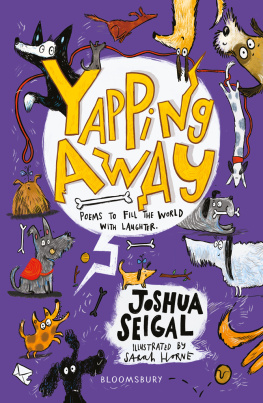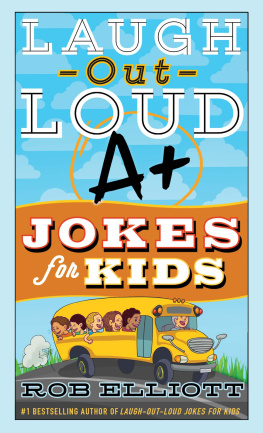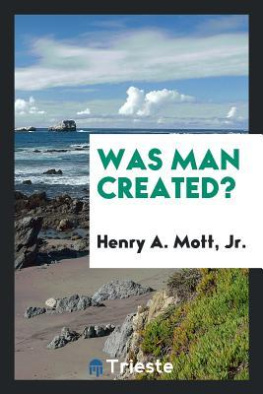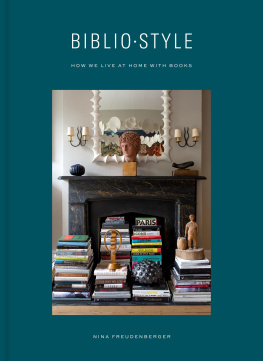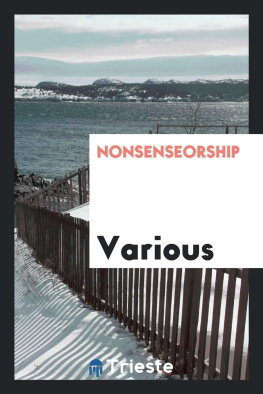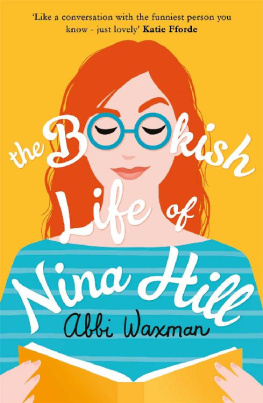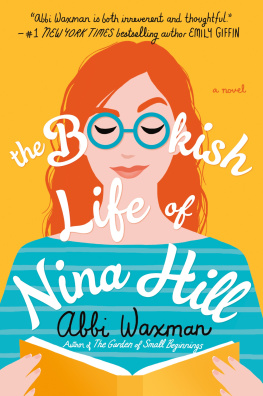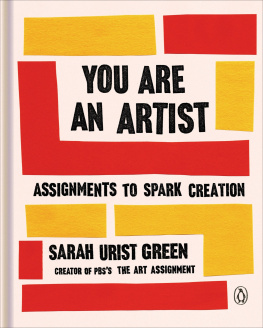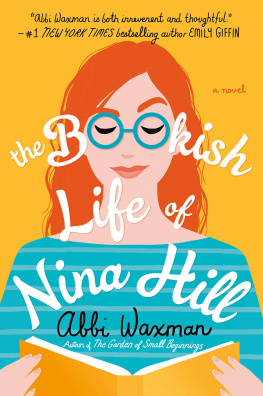SORTED BOOKS
NINA KATCHADOURIAN

Introduction by Brian Dillon
OPEN STACKS
BRIAN DILLON
I am unpacking my library. Yes I am. Thus the famously odd beginning to Walter Benjamins 1931 essay Unpacking My Library. Odd, that is, because, even allowing for peculiarities in the original German or the English translation (which I am unable to judge) and bearing in mind the intimate scene that Benjamin wishes to capture at the outset as he asks us to picture his books strewn about him, the line Yes I am has struck many readers as awkward and redundant. What exactly is its tone? Playful? Relieved? Triumphant? Pompous? (I always read it as if punctuated otherwise: Yes I am!) In light of Nina Katchadourians Sorted Booksa project that for twenty years has seen the artist arranging armfuls of books and their titles to poetic and deadpan comic effectI have begun to think that he might have meant it a little defensively. I am unpacking my books, he seems to say; they are not unpacking, or shelving, themselves. As if that is the kind of thing we could expect libraries to do when we are not looking.
Perhaps this interpretation seems more fanciful than Benjamins little sentence allows. Consider, however, the word that Katchadourian uses to describe her gatherings of three, four, or five (sometimes, but rarely, fewer or more) volumes. She calls them clusters, and the word has a plausibly organic implication: it is as though the books have convened of their own accord like plants or insectsfollowing secret or, in the case of the more explicitly comic or narrative groupings, not-so-secret attractions. But a cluster might equally be an astronomical phenomenon, like a constellation: a design composed or conjured out of vastly distant points in space, seen as such only from a single vantage. Or it might be a phonetic aggregation of consonant or vowel sounds, flung into intimacy by speech though they belong to different words. Websters Third New International Dictionary gives us the consonantly crunchy phrase winch sprocket by way of example: read it aloud and the cluster nchspr suddenly seems an unlikely thing to have said. A cluster, in other words, yokes together discrete elements in an order that is at once natural and estranging.
Isnt this to some degree how we organize and use our libraries? Of course, there are fastidious individuals who line up their books by strict alphabetical orderthough even in such cases subjective choices must be made, such as whether to order by author name or by title, the latter much less likely. And at the other extremeif that is indeed what it isthe likes of art historian Aby Warburg, who notoriously structured his library by affinity or correspondence: a scholarly version of the prevalent belief on the part of sloppier bibliophiles that they themselves constitute the ordering principle and can lay hands on any book at a moments notice. (This is almost always a consoling fantasy. Though as Georges Perec puts it in his Brief Notes on the Art and Manner of Arranging Ones Books [1978], one can always trawl the whole library: An unsorted book collection is not a serious matter in itself. It is a problem of the same order as Where did I put my sock? ) Most libraries, whether seemingly disordered or tidy and well cataloged, actually oscillate between the poles of order and disorder, and in day-to-day use even the most rigorously shelved collection is at the same time a labyrinth of more-or-less random passages between unrelated books that somehow go together by virtue of having sat near or opposite each other for years.
Sorted Books is many things at the same time: a series of sculptures, or photographs, or site-specific installations; a collection of short stories, or poems, or jokes; a work in which the found object is subject alike to chance and the most painstaking choices; a delicate conceptual game with the horizontal and the vertical. But it is first of all an act of reading. We have to picture the artist at large between the bookshelves, scanning the spines for likely, or unlikely, meetings among their titles. Katchadourian says that in most cases she needs to handle the books themselves, trying out possible alignments, leaving small piles behind her as she goes, like a careless or impatient student in search of the right dissertation material. (The first occasion on which she altered her intimate and vagrant method was while on a residency at the International Artists Studio Program in Stockholm in 2004; working with the fragile books in the personal library of August Strindberg, she was forced instead to write their titles on notecards, composing her own partial and highly subjective catalog.) It is hard to know how to describe this reading process. Perhaps it is facile. (I mean practiced and easy rather than crass, but Katchadourian surely flirts with that too: judging every book by its cover.) Or actually exacting, penetrative, acute: she sees things on the surface that even the most critical reader could not glean from the texts inside. She becomes a hunter-gatherer among the stacks: she seems to be grazing, but in a moment she will pounce.
Its crucial, I think, this sense of the artist moving on the surface but at the same time spearing or pinning her prey, preparing it for a new life in an alternative, but parallel, collection. This is, after all, what reading consists of anyway. In his 1964 essay The Book as Object, Michel Butor notes that the chief advantage of the printed book over prior forms such as the scrolland indeed over then novel technologies such as the tape recorderis the way it allows us to scan horizontally between pages and vertically through the text, varying our levels of attention until we light on the portion of print that we are after. (And also, of course, allowing us to note and record our place in the text with far greater ease.) We read nowor perhaps we had better say half a century later that we read until recently: a question to which Ill returnin three dimensions: each page is a portal, and the portals multiply like parallel arcades.
One of Katchadourians most elegant tricks in Sorted Books is to have corralled far-flung volumes and their titles, which we may imagine as sparsely arrayed locations on a map or bright points in a star chart, into the most laconic of textual forms: the list, just one thing after another. We might recall with Butor the enormous importance of enumeration in classical literature, whether in the Bible, Homer, Greek tragedy, Rabelais, Victor Hugo, or modern poetry. But the point is not exactly to invoke the venerable literary history, or the more recent conceptual heritage, of the list as suchlets just note for now that the artist is no doubt aware of that history and of the structural implications of flattening (or should the term better be extruding?) a library into such narrow verbal confines. Instead, consider the sly poetics of the lists themselves. At times they are pure lists, paratactic inventories of distinct moments, montage sequences. Quite in accord with Henri Bergsons contention that laughter results when a human being acts like a machine, their comedy is a question of repetition with difference or (funnier) no difference, as in the following from Composition (1993):
Repeat After Me
Are You Confused?
Are You Confused?
and
Procrastination
Ill Quit Tomorrow
Ill Quit Tomorrow.
For sure, such clusters also imply certain narratives, and much of the humor in Sorted Books comes from the way Katchadourian broaches entire epics, romances, and (more usually) tragedies with the slimmest of verbal resources. (Its partly an old literary game. Think of Ernest Hemingways stab at a very short story: For sale: baby shoes, never worn.) The stories in question often seem keyed to the age of the books themselves, not just in terms of the books subject matter but also the tone of their titles, their syntax, and their style. For example, the clusters in Once Upon a Time in Delaware/In Search of the Perfect Book (2012), composed of popular or sentimental fiction, childrens books, and improving tomes from the late nineteenth and early twentieth centuries, have about them a kind of blackly comic morality, couched in the language of that time:


